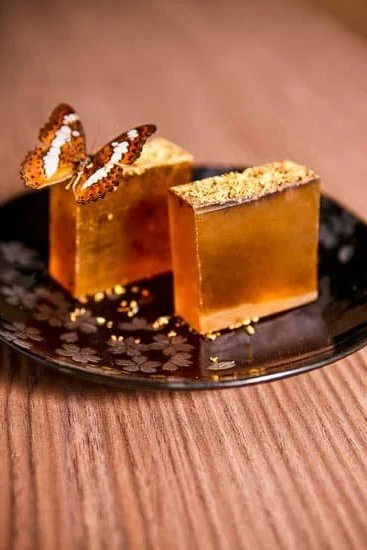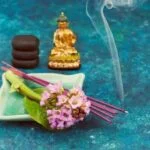Hot tubs have become increasingly popular in recent years as more people seek relaxation and stress relief in the comfort of their own homes. One growing trend among hot tub enthusiasts is the use of aromatherapy oils to enhance the therapeutic benefits of soaking. But can you put aromatherapy oils in a hot tub? In this article, we will explore the world of aromatherapy and how it can complement your hot tub experience.
Aromatherapy is a holistic healing practice that harnesses the natural properties of essential oils derived from plants to promote physical, mental, and emotional well-being. These oils are known for their distinct scents and therapeutic effects on the body and mind. When used in a hot tub, they can provide an added layer of relaxation, stress relief, and mood enhancement.
However, it is crucial to exercise caution when choosing aromatherapy oils for your hot tub. Using low-quality or synthetic oils may not only damage your hot tub but also cause skin irritations or other adverse reactions. It is important to select high-quality essential oils that are specifically designed for use in water-based environments like hot tubs.
In the following sections, we will delve deeper into the world of aromatherapy and explore its benefits, safety considerations, compatibility with different hot tub materials, proper usage techniques, recommended essential oils for hot tubs, maintenance tips, common mistakes to avoid, and more. So let’s dive in and discover how aromatherapy oils can elevate your hot tub experience to new heights of luxury and relaxation.
What is aromatherapy
Aromatherapy is a holistic healing practice that uses essential oils to promote physical and emotional well-being. The term “aromatherapy” was coined by French chemist René-Maurice Gattefossé in the early 20th century, and it has since gained popularity as a natural and effective way to improve relaxation, reduce stress, and enhance mood.
Essential oils are highly concentrated plant extracts that capture the aromatic compounds of various plants. They are known for their distinct fragrances, which can have powerful effects on our senses and emotions. Each essential oil has its own unique composition of chemical compounds, giving it specific therapeutic properties.
One of the main benefits of aromatherapy is relaxation. The gentle scents of certain essential oils can help calm the mind and body, making it easier to unwind after a long day. Lavender oil is particularly renowned for its relaxing properties, often used to promote better sleep or alleviate anxiety.
In addition to relaxation, aromatherapy can also aid in stress relief. Certain essential oils have been shown to reduce stress levels by interacting with brain chemicals such as serotonin and dopamine. Bergamot oil, for example, is commonly used in aromatherapy to uplift the mood and relieve symptoms of stress or depression.
Mood enhancement is another key aspect of aromatherapy. The use of uplifting scents like citrus or peppermint oils can help boost energy levels and improve focus. These invigorating scents stimulate brain activity and promote alertness, making them ideal for times when you need an extra pick-me-up.
While aromatherapy can produce positive effects on both physical and emotional health, it is important to note that individual responses may vary. It’s always best to choose high-quality essential oils from reputable sources and consult with a qualified professional if you have any concerns or specific health conditions.
| Essential Oil | Benefits |
|---|---|
| Lavender | Relaxation, improved sleep, anxiety relief |
| Bergamot | Stress relief, mood enhancement, alleviates symptoms of depression |
| Citrus (orange, lemon) | Mood enhancement, energy boost, increased focus |
| Peppermint | Mood enhancement, invigorating, mental clarity |
Safety considerations
When it comes to using aromatherapy oils in your hot tub, it is important to prioritize safety and choose high-quality essential oils. Using synthetic or low-grade oils not only puts your hot tub at risk of damage, but it can also cause skin irritations and other health concerns. Therefore, understanding the importance of using high-quality essential oils and being aware of potential risks is crucial for a safe and enjoyable experience.
- Choose High-Quality Essential Oils: It is essential to select high-quality essential oils for your hot tub. Look for reputable brands that provide pure, therapeutic-grade oils. These oils are typically extracted through steam distillation or cold-press methods, ensuring the preservation of their natural properties. Avoid oils that contain additives or synthetic fragrances as they may not offer the same therapeutic benefits and can even cause adverse reactions.
- Potential Risks: Low-quality or synthetic aromatherapy oils can have a detrimental effect on your hot tub’s components and functionality. Some oils may react with the materials used in the construction of hot tubs such as acrylic, fiberglass, or wood, leading to discoloration, deterioration, or damage. Additionally, certain oils may cause skin irritations or allergic reactions when directly applied to the skin without proper dilution.
To mitigate these risks:
- Perform a Patch Test: Before using any essential oil in your hot tub, perform a patch test by applying a small amount diluted oil to a small area on your forearm. This can help identify any potential skin allergies or sensitivities.
- Dilute Properly: Always follow recommended dilution ratios when adding essential oils to your hot tub water. Diluting the oil helps prevent skin irritations and minimizes any negative effects on the hot tub components.
- Read Manufacturer Guidelines: Consult your hot tub manufacturer’s guidelines regarding the use of aromatherapy oils. They may have specific recommendations or restrictions depending on the materials and design of your hot tub.
By using high-quality essential oils and being mindful of potential risks, you can enjoy the therapeutic benefits of aromatherapy in your hot tub while ensuring a safe and pleasant experience for yourself and others.
Compatibility with hot tub materials
It is important to consider the compatibility of aromatherapy oils with different hot tub materials to ensure the longevity and safety of your hot tub. While essential oils can enhance your hot tub experience, certain oils may interact negatively with specific materials, causing damage or discoloration.
- Acrylic: Acrylic is a popular material for hot tubs due to its durability and sleek appearance. When using aromatherapy oils in an acrylic hot tub, it is crucial to choose oils that are gentle on this material. Citrus-based oils and any oil containing alcohol should be avoided as they can cause surface damage and discoloration. Instead, opt for oils like lavender, chamomile, or eucalyptus which have soothing properties without harming the acrylic surface.
- Fiberglass: Fiberglass hot tubs are known for their smooth finish and resistance to cracking or fading. However, some aromatic oils may cause the gel coating on fiberglass surfaces to break down over time. To ensure compatibility, select essential oils that are safe for use with fiberglass, such as tea tree oil, bergamot, or sandalwood.
- Wood: Wood hot tubs offer a rustic and natural aesthetic but require special care when using aromatherapy oils due to their porous nature. Oils that are too concentrated or contain solvents can penetrate the wood grain and lead to warping or deterioration. It is recommended to dilute the essential oils properly before adding them to a wood hot tub. Cedarwood, juniper berry, and pine are great options that complement the wood aroma without causing harm.
To preserve your hot tub’s integrity and ensure a pleasant experience with aromatherapy oils, always conduct a patch test on an inconspicuous area of your hot tub before applying any essential oil directly into the water. This will help identify any adverse reactions between the oil and material beforehand.
Remember that regular cleaning and maintenance routines are essential when using aromatherapy oils in your hot tub. Residue from the oils can accumulate over time, leading to clogged filters or unpleasant odors. Proper filter maintenance and water quality checks are crucial for the longevity of your hot tub and enhancing your aromatherapy experience.
How to properly use aromatherapy oils
Aromatherapy oils can be a wonderful addition to your hot tub experience, providing an added level of relaxation and therapeutic benefits. However, it is important to use them properly to ensure safety and effectiveness. Here are step-by-step instructions on how to add essential oils to your hot tub:
- Choose high-quality essential oils: It is crucial to select high-quality, pure essential oils for your hot tub. Synthetic or low-grade oils may not only diminish the therapeutic effects but also damage the hot tub or cause skin irritations. Look for reputable brands that specialize in aromatherapy products.
- Dilute the oils: Essential oils are highly concentrated and should always be diluted before adding them to the hot tub water. The recommended dilution ratio is usually 1 drop of oil per 100 gallons of water. This ensures that the oil is dispersed evenly and prevents any potential skin irritation.
- Mixing techniques: To mix the essential oils with the hot tub water, there are a few different methods you can use. One option is to create a blend by combining the desired essential oils in a separate container before adding them to the water. Another method is to add a few drops of each oil directly into the water and use a gentle stirring motion with your hand or a spa-safe utensil.
- Diffusing methods: If you prefer not to add the essential oils directly into the water, you can also use diffusing methods such as using aromatherapy diffuser balls or sachets that are specifically designed for hot tubs. These allow the fragrance of the oil to disperse throughout the air without coming into direct contact with the water.
It is important to note that certain essential oils may have specific guidelines regarding their usage in hot tubs, so always refer to manufacturer recommendations and consult with an aromatherapist if you have any concerns or questions.
| Step | Instructions |
|---|---|
| 1 | Choose high-quality essential oils. |
| 2 | Dilute the oils: 1 drop of oil per 100 gallons of water. |
| 3 | Mix the oils with the hot tub water by blending them or adding drops directly into the water and stirring gently. |
| 4 | If preferred, use diffusing methods such as aromatherapy diffuser balls or sachets instead of adding oils directly to the water. |
Recommended aromatherapy oils for hot tubs
Safe Essential Oils for Hot Tub Use
When it comes to using aromatherapy oils in a hot tub, it is crucial to select oils that are safe for such use. Below is a comprehensive list of essential oils that are considered safe for hot tubs, along with their specific therapeutic properties:
- Lavender: Known for its calming and relaxation properties, lavender oil promotes restful sleep and alleviates stress and anxiety.
- Eucalyptus: With its invigorating scent, eucalyptus oil is excellent for respiratory health and can help clear congestion or sinus issues.
- Peppermint: This refreshing oil provides a cooling sensation on the skin and is great for relieving muscle tension and headaches.
- Chamomile: Chamomile oil is renowned for its soothing effects on the mind and body, aiding in relaxation and reducing inflammation.
- Rosemary: Known to boost mental clarity and improve focus, rosemary oil also has analgesic properties that can alleviate muscle pain.
Suggested Blends for Relaxation or Revitalization
Creating unique blends of essential oils can enhance the therapeutic experience of your hot tub session. Here are a few suggested blends:
- Relaxation blend: Combine 4 drops of lavender oil with 2 drops of chamomile oil for a soothing blend that promotes deep relaxation.
- Revitalization blend: Mix 3 drops of eucalyptus oil with 2 drops of peppermint oil to invigorate your senses and promote revitalization.
Remember to always dilute your chosen essential oils before adding them to the hot tub water to avoid skin sensitivities or damage to the equipment. Additionally, it is recommended not to exceed a total of 10-15 drops of essential oils per 500 gallons of water.
By incorporating these recommended aromatherapy oils into your hot tub experience, you can create a truly luxurious and therapeutic environment to relax and rejuvenate in.
Benefits of aromatherapy in hot tubs
Aromatherapy has been used for centuries as a natural way to promote relaxation and enhance overall well-being. When combined with the soothing effects of hot tub soaking, aromatherapy oils can provide even greater therapeutic benefits.
Enhanced Stress Relief
One of the key benefits of using aromatherapy in hot tubs is its ability to enhance stress relief. The combination of warm water, buoyancy, and soothing scents can create a truly calming experience for both the mind and body.
Certain essential oils, like lavender or chamomile, have been shown to have anxiety-reducing properties that can help you unwind after a long day. Inhaling these scents while in a hot tub can initiate relaxation responses in the brain and promote feelings of tranquility.
Improved Respiratory Function
The steamy environment of a hot tub can also be enhanced by aromatic essential oils that support respiratory health. Oils such as eucalyptus or peppermint have decongestant properties that can help clear your nasal passages and relieve sinus congestion. Inhaling these invigorating scents while breathing in the warm moist air can open up your airways and make it easier to breathe. This is especially beneficial for individuals dealing with allergies or respiratory conditions.
Muscle Relaxation
The combination of heat, massage jets, and aromatherapy oils in a hot tub provides an unparalleled opportunity for muscle relaxation. Essential oils like lavender or marjoram have muscle-relaxing properties that can help soothe sore muscles and alleviate tension. The warm water in the hot tub helps improve blood circulation, while the aromatic scent of these oils enhances their effects on muscle relaxation.
By incorporating aromatherapy into your hot tub experience, you are not only enjoying the luxury of relaxation but also reaping numerous health benefits at the same time. Whether you need to unwind, improve your respiratory function, or release muscle tension, aromatherapy oils in a hot tub can provide the perfect solution for enhancing your overall well-being.
Maintenance and cleaning tips
Maintenance and cleaning tips:
In order to maintain a clean and odor-free hot tub when using aromatherapy oils, it is important to follow some essential tips. First and foremost, regular filter maintenance is crucial. The filters in your hot tub play a vital role in keeping the water clean by trapping debris, oil residues, and other contaminants.
When using aromatherapy oils, these oils can potentially clog the filters if not properly managed. It is recommended to clean or replace your hot tub filters on a regular basis to ensure optimal performance.
Another important aspect of maintaining a clean hot tub when using aromatherapy oils is to regularly check the water quality. Essential oils can alter the pH balance of the water and may result in cloudy or discolored water if not properly addressed. It is advisable to test the water regularly using appropriate testing kits and adjust the chemicals as needed to maintain proper pH levels. This will ensure that your hot tub remains safe and enjoyable for use.
Additionally, it is important to give attention to any build-up or residue that may occur over time on the surfaces of your hot tub. Aromatherapy oils can sometimes leave behind a film or residue that can be difficult to remove if not addressed promptly. To prevent this, it is recommended to wipe down the surfaces of your hot tub regularly with appropriate cleaning agents specifically designed for use with hot tubs.
Overall, when using aromatherapy oils in your hot tub, being diligent about maintenance and cleaning will help extend the lifespan of your equipment while ensuring you have a pleasant and hygienic experience each time you use it. By following these simple guidelines, you can continue enjoying the therapeutic benefits of aromatherapy oils without compromising the cleanliness of your hot tub.
Common mistakes to avoid
While using aromatherapy oils in your hot tub can enhance your overall relaxation and therapeutic experience, it’s important to be aware of some common mistakes and misconceptions that can arise when incorporating essential oils into your hot tub routine. By avoiding these pitfalls, you can ensure the longevity of your hot tub and maximize the benefits of aromatherapy.
One common mistake is using too much oil. It may be tempting to add a large amount of essential oil to intensify the fragrance, but this can actually have negative effects.
Adding an excessive amount of oil can create a greasy film on the water’s surface, clog filters, and even cause damage to the internal components of your hot tub. It’s important to follow recommended dilution ratios provided by the manufacturer or trusted sources when adding essential oils to your hot tub.
Another mistake to avoid is neglecting to re-balance the water chemistry after using aromatherapy oils. Essential oils contain compounds that can alter the pH balance of your hot tub water. This imbalance can lead to issues such as scaling, corrosion, or an environment conducive for bacterial growth. Make sure to regularly test and adjust the water chemistry accordingly when using aromatherapy oils in your hot tub.
Properly diluting the oils is crucial when using them in a hot tub setting. Failing to dilute essential oils before adding them directly into the water can cause skin irritations or allergic reactions. Always refer to recommended dilution ratios and mix the essential oil with a carrier substance, such as a mild liquid soap or vegetable glycerin, before introducing it into your hot tub.
By avoiding these common mistakes and misconceptions about using aromatherapy oils in your hot tub, you can ensure a safe and enjoyable experience while maximizing the therapeutic benefits of both aromatherapy and hot tub soaking. Remember to always do your research, follow manufacturer’s guidelines, and prioritize the maintenance of your hot tub to create a truly luxurious and healthy environment.
Conclusion
In conclusion, incorporating aromatherapy oils into a hot tub experience can provide a luxurious and highly therapeutic experience. Throughout this article, we have explored the benefits of aromatherapy, the safety considerations when using essential oils in a hot tub, and provided step-by-step instructions on how to properly use these oils. We have also discussed the compatibility of different hot tub materials with aromatherapy oils and recommended specific oils for relaxation or revitalization.
By combining the soothing properties of hot water with the aromatic benefits of essential oils, individuals can enhance their overall well-being and relaxation. The use of high-quality essential oils is crucial to ensure that the hot tub remains in optimal condition and users avoid any potential skin irritations. Dilution ratios and proper mixing techniques should be followed diligently to create a safe and enjoyable experience.
Aromatherapy in hot tubs offers numerous advantages, including stress relief, improved respiratory function, and muscle relaxation. By choosing appropriate blends of essential oils known for their therapeutic properties, individuals can customize their hot tub experience to suit their specific needs. It is important to maintain regular filter maintenance and water quality checks to keep the hot tub clean and odor-free when using aromatherapy oils.
In summary, incorporating aromatherapy into a hot tub experience can elevate it to new heights. By following safety precautions, properly diluting oils, and utilizing high-quality products, individuals can create a luxurious spa-like atmosphere in the comfort of their own homes. Unlock the true potential of your hot tub by exploring the world of aromatherapy oils – your mind, body, and senses will thank you for it.
Frequently Asked Questions
Is it safe to put aromatherapy in a hot tub?
It is generally safe to put aromatherapy in a hot tub, but certain precautions should be taken to ensure it is done correctly. First and foremost, it is important to choose aromatherapy products specifically designed for use in hot tubs. These products are typically water-soluble and won’t leave any residue or buildup in the tub’s filtration system.
Additionally, it is recommended to use only a small amount of aromatherapy product, as using too much could lead to skin irritation or allergic reactions. Finally, be cautious about the scents used and how they may interact with other chemicals already present in the hot tub.
What aromatherapy can you use in a hot tub?
There are various types of aromatherapy that can be safely used in a hot tub. Some popular options include lavender, eucalyptus, chamomile, and peppermint. Lavender is known for its calming properties and can promote relaxation while soaking in the hot tub.
Eucalyptus has a refreshing scent and may help clear sinuses and improve respiratory health. Chamomile offers soothing effects and can aid in relieving stress and anxiety. Peppermint is invigorating and can provide a cooling sensation, making it ideal for a refreshing soak in the hot tub.
Can you put essential oils in the tub?
Yes, you can put essential oils in the tub, but it is important to proceed with caution. Essential oils are highly concentrated plant extracts that can be irritating if used improperly or at high concentrations. When adding essential oils to a hot tub, it is crucial to dilute them first with a carrier oil or bath salts before pouring them into the water.
This helps disperse the essential oils evenly throughout the water and reduces the risk of skin irritation or adverse reactions. It’s also important to thoroughly mix the water after adding essential oils to ensure even distribution before entering the tub.

Are you looking for a natural way to improve your health and wellbeing?
If so, aromatherapy may be the answer for you.





